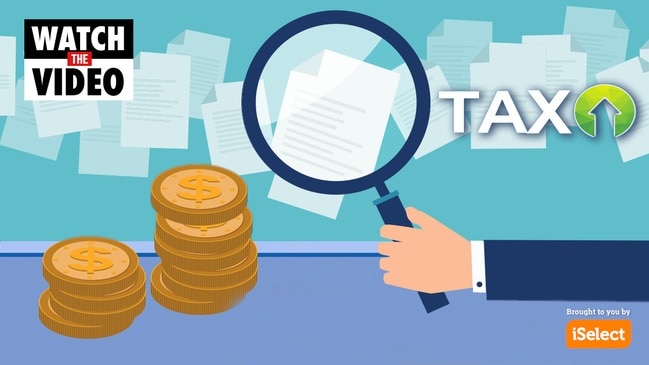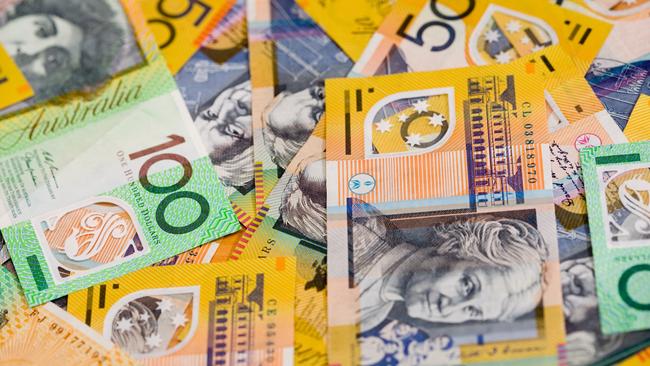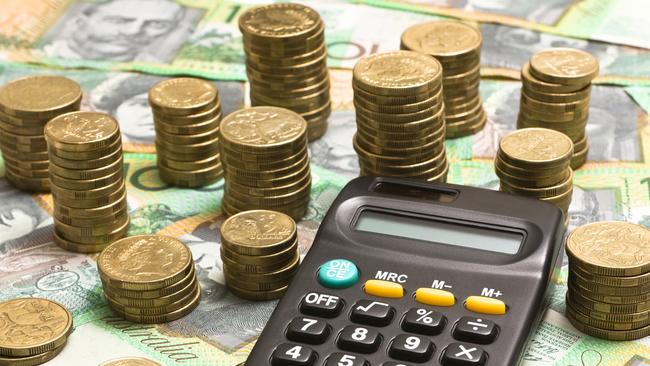How to claim investments and EFTs on Australian tax returns
Aussies are being warned that any creative attempts to claim more money will be caught out and people risk facing penalties.

Money
Don't miss out on the headlines from Money. Followed categories will be added to My News.
More than 600,000 Aussies are being warned to avoid a common mistake with their tax return, otherwise they risk having to pay back money or have their refund delayed.
The Australian Taxation Office (ATO) has found an increasing number of people are investing in shares or Exchange Traded Funds (ETF).
Yet, many often misunderstand their tax obligations when reporting capital gains from the sale of shares as well as income in the form of dividends and distributions.
Assistant Commissioner Tim Loh said the ATO is keenly aware that the growth of micro-investment platforms has helped a record number of new investors enter the market.
“Unfortunately, first-time investors often don’t understand their taxation obligations, don’t keep appropriate records and are more likely to make mistakes when lodging their tax returns,” he said.
The ATO receives data from the Australian Securities and Investments Commission (ASIC), brokers, exchanges, and share registries, on dividend payments and the purchase and sale of shares.
This tax time information on 5.8 million transactions will automatically be added to the tax returns of 612,000 taxpayers.
“While this data makes tax time much simpler, it is still important for investors to check that all their relevant data has been included,” Mr Loh noted.

What are ETFs?
ETFs, offer low-cost access to thousands of different types of investments, and are an increasingly popular investment option among millennials.
Several micro-investing mobile platforms, such as Raiz and Spaceship, operate as managed investment funds that purchase ETFs.
Investors buy units in the ETF using the micro-investing app on their phones. At tax time, they provide investors with a Standard Distribution Statement (SDS) that breaks down what they need to declare in their tax return.
When an investor disposes of units, the SDS will show the capital gains or losses made from the sale of the units, which also need to be included in tax returns.
Treat earnings like cash
Generally speaking, taxpayers will typically need to declare earnings even if no money is withdrawn from the account.
“Most people recognise that they must pay tax on any money earned from selling shares. But many don’t realise that tax also applies to dividends and distributions, even if they are automatically reinvested into a reinvestment plan,” Mr Loh said.
Anything received through a dividend or distribution reinvestment plan is considered income and for tax purposes is treated in the same way as receiving cash.

Investors who sell shares will need to calculate their capital gain or loss and record it in their tax return.
It is important to note that capital losses only happen on the sale of the share. Investors cannot claim ‘paper losses’ on investments if the share price drops but they continue to own the share.
“Each year we see some enterprising entrepreneurs trying to offset their capital losses against income tax applied to other income, such as salary and wages. Others attempt to offset a ‘paper loss’ against actual income,” he said.
“Our sophisticated data analytics are able to spot this and we may apply penalties for investors that have intentionally done the wrong thing.”
Records keep you out of trouble
Keeping good records is the best way to ensure you are complying with your tax obligations, added Mr Loh.
“Taxes on share and ETF investments can be complex and poor record-keeping doesn’t make it any easier. Keeping good records, including dates, prices, commissions, and details of taxable events such as share splits, share consolidations, mergers, and demergers is essential to avoiding trouble at tax time,” he said.
“Errors related to CGT or income from dividends and distributions, whether deliberate or accidental, will lead to amendments. You may need to repay some or all of a tax refund and penalties may apply.”

What details you need at tax time
• the date of purchase/reinvestment
• the purchase amount/value
• details of any non-assessable payments to you
• the date and amount of any calls (if shares were partly paid)
• the date of sale and sale price (if you sell them)
• any brokerage costs or commissions paid to brokers when you buy or sell
• details of events such as share splits, share consolidations, returns of capital, takeovers, mergers, demergers and bonus share issues.
• details of capital losses made in previous years – you may be able to offset these losses against future capital gains
• dividend or managed investment distribution statements (Standard Distribution Statements)
Originally published as How to claim investments and EFTs on Australian tax returns





